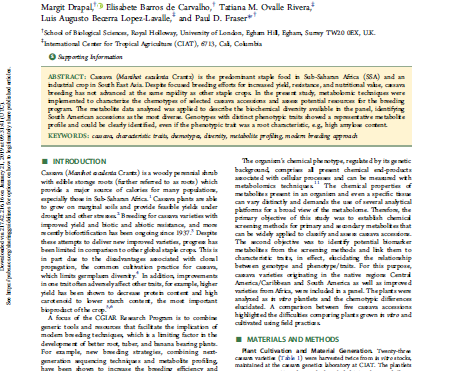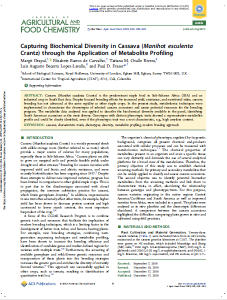Cassava (Manihot esculenta Crantz) is the predominant staple food in sub-Saharan African (SSA) and an industrial crop in South East Asia. Despite focused breeding efforts for increased yield, resistance and nutritional value, cassava breeding has not advanced at the same rapidity as other staple crops. In the present study, metabolomic techniques were developed and implemented to characterise the chemotypes of selected cassava accessions and assess potential resources for the breeding programme. The metabolite data analysed was applied to describe the biochemical diversity available in the panel, identifying South American accessions as the most diverse. Genotypes with distinct phenotypic traits showed a representative metabolite profile and could be clearly identified, even if the phenotypic trait was a root characteristic e.g. high amylose content.
Region: Africa, Asia, South Africa, South America
Date published:
2018
Published by:
Journal of Agricultural and Food Chemistry
Type of resource:
Journal article
Resource topic:
Cassava
Project/Programme: Not specific
Pest/Disease: Cassava mosaic virus
File type:
External link




